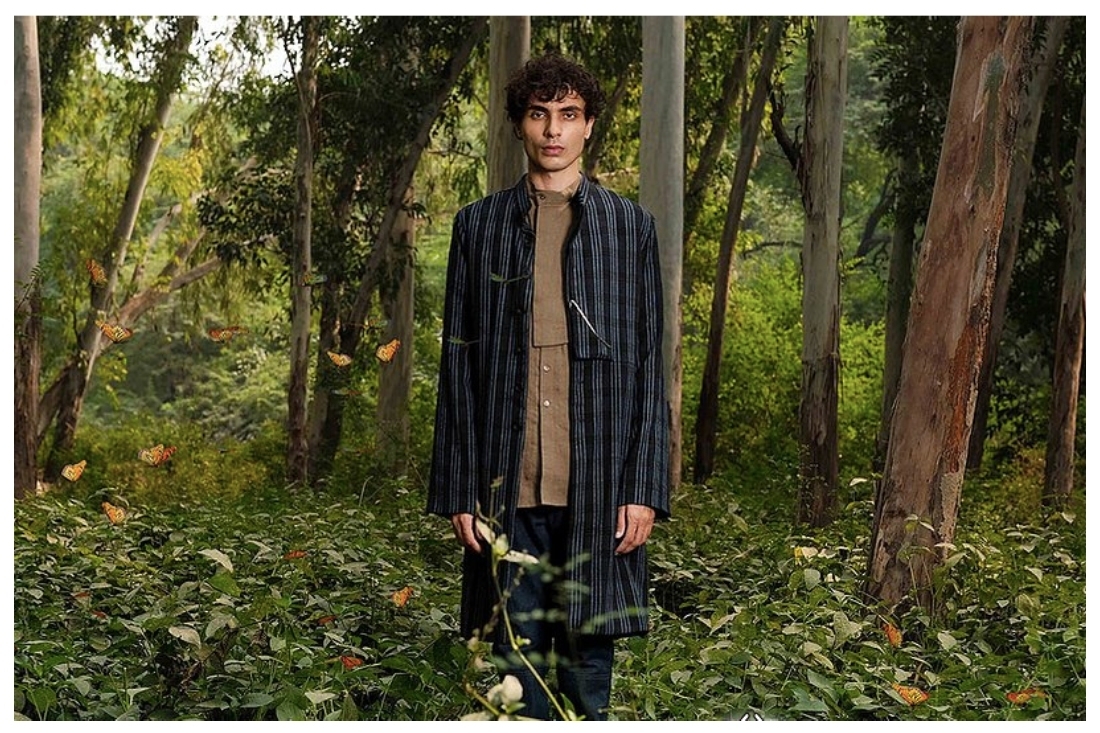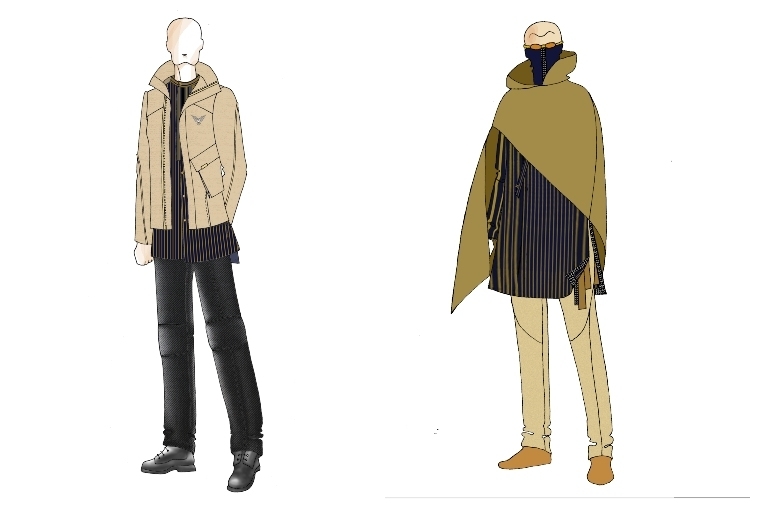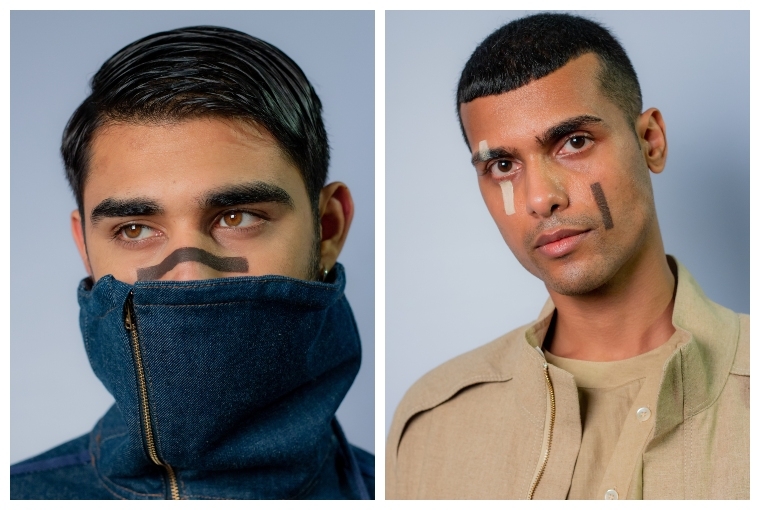

The Designer
Born in an engineer’s house in Kanpur, I had the privilege of spending my childhood in a lush, green, colonised neighbourhood. This was a secluded officers’ colony in the middle of the town — very few are even aware of it being there. I had a weird set of friends, a few kids from the rural families who have been staying in their mud houses within the perimeter, before the area was colonised. We used to spend a great deal of time sitting on the branches of trees, playing with cattle, flying kites, and most importantly, working on many creative projects.
We were just a bunch of eight-year-olds who began making a bamboo effigy of the mythical figure Ravana, for the Dussehra festival. In north India, during this festival, huge effigies of Ravana are made by team​s​ of professional bamboo craftsmen, which are then set on fire to demonstrate the win of good over evil. We used to go and watch them work and come back to my backyard to implement the day's learning. No one was even aware until the model was up for display on a festive day. It was just eight feet tall and we were four. For the next three years, we did the same, but the height of the model reached up to thirty feet — we eventually had to call grownups to help us assemble the parts.
This is how I spent time at home and the school ​that I ​never wanted to attend​. There only two things garnered my attention: team sports and the art room. I have represented my school many times in various art competitions, and was fortunate to be recognised as the creative of the year for three consecutive years.
The Label
Having worked at multiple places, for more than five years, I was still looking for contentment in regard to positive fashion. It felt like a vicious circle of making and selling products. Through a friend, I got a chance to meet an investor and that was it. I took the leap, but little did I know that the destination was farther away than I could have ever imagined. Once again, the same feeling of making and selling struck me. Upon realising that I need to be part of the solution, the road was unidirectional. I quit all that I was doing so far, pressed the reset button, and started preparing myself mentally and physically to take on the challenge.
In the process, I devoted myself to focused research on sustainable fashion and was amazed to see the various initiatives worldwide. With time, the perception grew and I began putting together a roadmap for a conscious world of fashion. It took a couple of years, but the vision finally came — ‘DRESS TO REFORM’ and DhÄtu Design Studio was born.
The Process
The inspiration surrounds us, the day-to-day life; it is just a matter of paying attention to the little details. The creative process is one of the fundamental actions that continuously operates, even in dreams. I have woken up many times in the middle of the night and sometimes I could not sleep due to my hyperactive thought process. When the rhythm is right, it is a meditative experience and I love that feeling where time stops existing
The collection is a showcase of possibilities, an amalgamation of ideas and experiences gathered through time. I have taken into account the entire lifecycle of the product, starting from the fabric development stage to the end phase of use. Concept ‘Dress to Reform’ states that the products serve a purpose throughout their life — sourcing fabric from handloom weavers helps support the traditional ​Indian ​culture​ of weaving​, the problem solving utilitarian styling​ keeps things in place​, natural fabrics keep the wearer at ease and provide comfort, and at the end of life, these materials are recyclable, compost-friendly, and biodegradable. Quite simply, taking from the Earth and putting it back there, purpose-driven fashion to reduce the impact on the environment. The design inspiration comes from the works of modern architect Le Corbusier — his minimal aesthetics, and utility-based direction. The styling is now sharper than ever; the idea is to create uncompromising design value with fewer materials.
The Sustainable Blueprint
It’s not about what you do, but how you do it. We did a careful and detailed life-cycle analysis of all the processes involved — the first step towards sustainability. At DhÄtu, we practice ​conscious souring of materials that do not harm but enrich the people and the environment. Our fabric selection is based on the social and cultural value system. This season we have mainly used 3 fabrics: ​Handloom Ahimsa Silk, a variety of silk, which is produced without killing the worm; ​ ​Natural Indigo dyed Handloom Denim, developed by artisan cluster, pure cotton denim; Pure Hemp Fabrics, as hemp farming revitalises the soil nutrients and is a brilliant rotation crop. The fabric has many beneficial properties like anti-bacterial nature, brilliant tensile strength, and breathability​.
The traditional Indian culture of hand-weaving helps empower more than a million weaver families. These magnificent creations come to life with every movement of the loom, without the use of any electricity, accounting for the lowest carbon footprint and demonstrating the priceless human value of making things​ at the same time. ​Other raw materials like buttons and trims are mostly sourced locally. We are constantly looking for like-minded people and partners to find alternatives.

The Current Landscape
I am very hopeful. With all the various initiatives worldwide​,​ it's clear that the change is in momentum, but fashion is a processes and operation intensive business. There are multiple channels that an idea has to go through, before it becomes a product, and many times these channels are distantly placed. To keep a track of content claims in the sourcing and development stage is the biggest challenge. By the time an idea reaches the product stage it has gone through many operators, and every time there is a possibility of adulteration. Fast-fashion promises business owners and vendors financial prosperity at all costs and this acceptance has blinded many. Sustainability is treated as a buzzword, especially at the operational level, and many times overlooked over urgency and pressure of deadlines. It can be very easily used as a facade to cover the real picture beneath.
The entire fashion cycle begins at the design stage, that is where the reboot button is​,​ as designers are the one deciding on the product range and materials to be sourced. This is a great stage to initiate the change — we as creatives must make thoughtful decisions in the first place, bending down to the popular culture is not creative​, it is about the rebellion, it is about finding the solutions. How could someone direct an entire organisation to use modal fabric, knowing it is generally sourced from endangered forests, or how could one use the skin of endangered animals and call it exotic — this is outrageous, and so old-fashioned.
As Gautam Buddha said, ‘change yourself, change the world’ is the way forward. Information is the key — research and development would be the direction. It's one thing to make a product look good, but we must focus on the multi-dimensional aspect as well. Creation needs to be purpose-driven and not just a feed for the already unchecked consumption. ​Implementation of one's learnings​ to find the solutions is of utmost importance ​to ​me​.​ ​The solutions are there today, and ​it's high time that ​we​ ​figure them out. It’s about awareness and responsibility.
